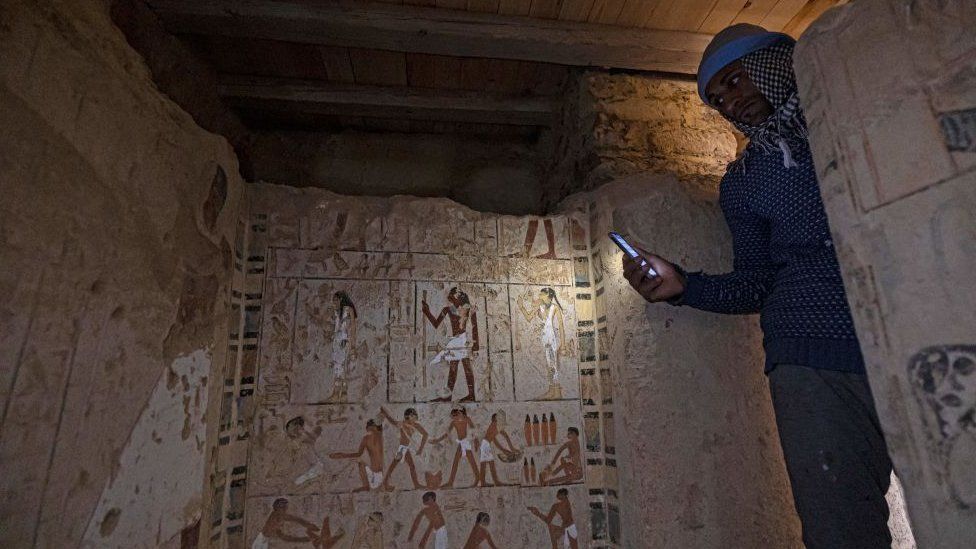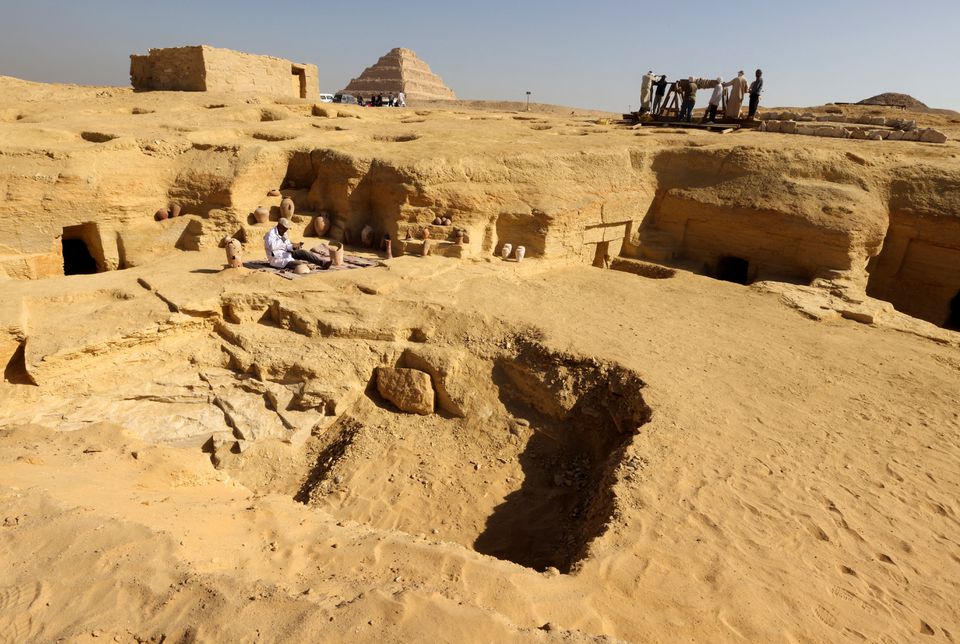The largest tomb, “decorated with scenes of daily life,” belonged to a priest, inspector and supervisor of nobles named Khnumdjedef

A recently discovered artifact is on display at the Saqqara archaeological site, where a gold-laced mummy and four tombs including of an ancient king’s “secret keeper” were discovered, south of Cairo on January 26, 2023. Photos: Khaled Desouki / AF

Egypt unveiled Thursday a gold-laced mummy and four tombs, including of an ancient king’s “secret keeper”, discovered in the Saqqara necropolis south of Cairo.
The vast burial site at the ancient Egyptian capital Memphis, a UNESCO World Heritage site, is home to more than a dozen pyramids, animal graves and old Coptic Christian monasteries.

Archaeologist Zahi Hawass, Egypt’s former antiquities minister, announced the latest discovery, dating from the fifth and sixth dynasties – around the 25th to the 22nd centuries BC – to reporters at the dig site.
The largest tomb, “decorated with scenes of daily life,” belonged to a priest, inspector and supervisor of nobles named Khnumdjedef, said Hawass.

Egyptian antiquities workers dig at the Saqqara archaeological site.
It was found in the pyramid complex of Unas, the last king of the fifth dynasty, who reigned some 4,300 years ago.
Another tomb belonged to Meri, who according to Hawass served as the pharaoh’s appointed “secret keeper”, a priestly title held by a senior palace official bestowing the power and authority to perform special religious rituals.

“The largest tomb, ‘decorated with scenes of daily life,’ belonged to a priest, inspector and supervisor of nobles named Khnumdjedef”
A third tomb belonged to a priest in pharaoh Pepi I’s pyramid complex, and the fourth to a judge and writer named Fetek, Hawass added.
Fetek’s tomb included a collection of “the largest statues” ever found in the area, Mostafa Waziri, head of Egypt’s Supreme Council of Antiquities, told reporters.

Archaeologist Zahi Hawass announced the latest discovery, dating from the fifth and sixth dynasties – around the 25th to the 22nd centuries BC – to reporters at the dig site.

The discoveries have been a key component of Egypt’s attempts to revive its vital tourism industry after years of political unrest, as well as after the COVID pandemic.
Down a 15-metre shaft, the expedition also found a large limestone sarcophagus that had remained sealed “just as the ancient Egyptians left it 4,300 years ago”, Hawass said.

A view inside the tomb at the Saqqara archaeological site.
Inside was a mummy featuring “gold-leaf covering” that belonged to a man named Hekashepes, according to Hawass, who described it as one of the oldest and most complete non-royal mummies ever found in the country.

A collection of pharaoh statues is on display during a press conference at the Saqqara necropolis.
But the discoveries have been a key component of Egypt’s attempts to revive its vital tourism industry after years of political unrest, as well as after the COVID pandemic.

A pharaoh statue on display at the Saqqara archaeological site.